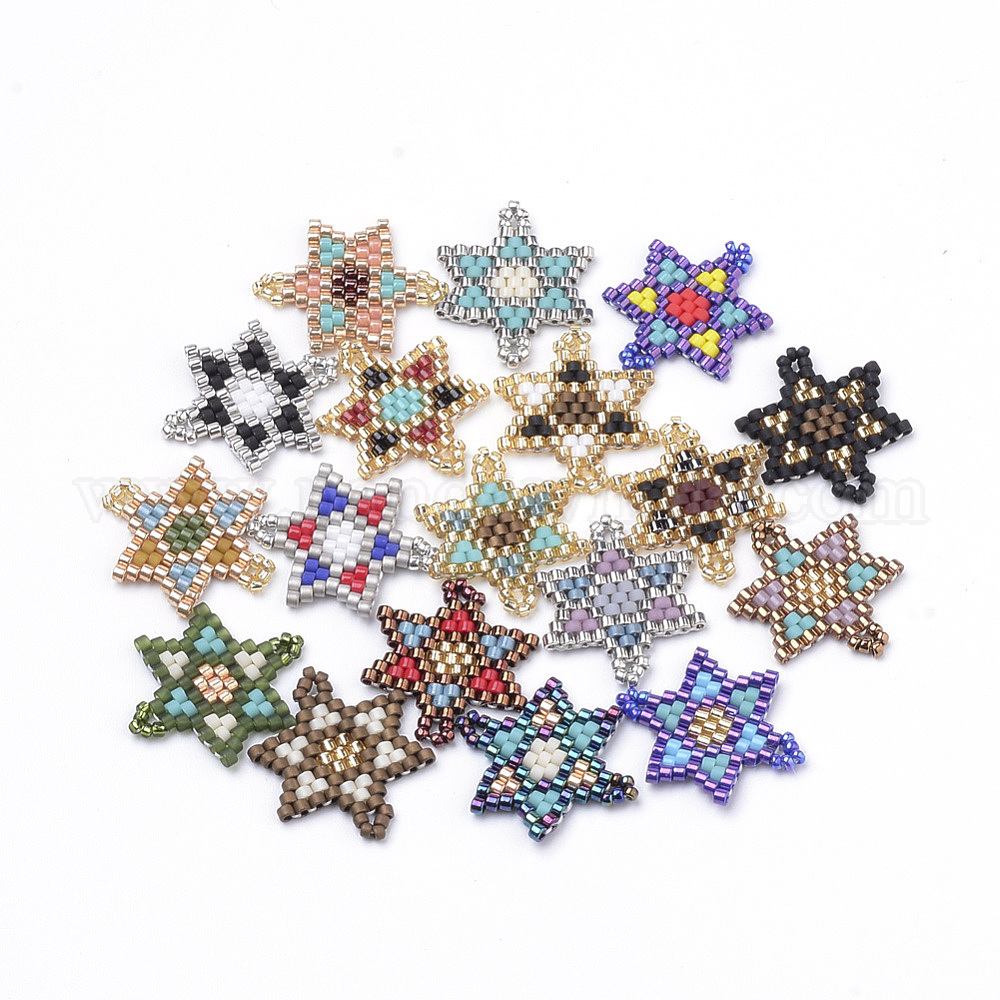

Until then, Japanese did not use beads very much, apart from Buddhism prayer beads and accessories such as obi-dome (obi cord decoration) and kanzashi (decorative hair pin). It is also said that Princess Michiko (the former Empress of Japan) set off a beaded bag craze by carrying one on her wedding day in 1959. By that time, most Japanese people were dressed in Western style clothing, and even some kimono were made with Western designs such as Majolica Omeshi that was inspired by Majorca porcelain patterns (see TRC 2021.2145 for a blog on this type of kimono, click here). These shiny, beaded bags became popular during the economic boom of Japan (late 1950s - early 1970s). In the late 1950s, some other companies started to produce beaded bags to go with kimono for special occasions, such as weddings. They stitched two beads at a time, using two strings of waxed cotton threads to secure the beads firmly in place, contrary to practice in some other countries, whereby three to five beads are stitched together at a time, causing the beaded patterns to easily fall apart.Ī Majolica Omeshi kimono inspired by Majorca porcelain patterns (TRC 2021.2145).

They used the same frames for beading as they used for silk embroideries. The embroidery on those bags was carried out by highly skilled kimono and obi embroiderers. Nowadays, Japanese bead companies supply about 10,000 different types of beads. Some of the beads are then gilded or coloured to give more variation, depth of colour and shine. Finally they are washed and polished to smooth their surfaces. Then the tubes are cut into tiny bits, mixed with charcoal powder to prevent cohesion and heated again to round their edges. To make these fine beads it is necessary for the glass workers to work with nearly molten glass rods that are quickly pulled and stretched into long and thin glass tubes. In general, the Japanese seed beads were regarded as being much easier to work with than the imported versions. These were 1.4mm - 1.9mm in size with larger holes than the imported items, as well as being lightweight and uniform in size and shape. Just after the Second World War (1939-1945) a large number of seed beads were still being bought from overseas (especially China, Czechia and India), and it was not until about 1950 that two Hiroshima-based companies, Miyuki and Toho Beads, started to produce their own seed beads. This company kept producing beaded bags to go with both Western clothes and kimono until 2016, when they closed their business.Īrt Deco style bag by Lumy Hashimoto, Osaka. The older examples of Hashimoto bags were made using imported beads and decorated with patterns in the Art Deco style. Beaded bags were also exported to the US and other countries. Around 1920 their quality bags became popular among young women in high society who dressed in Western clothes - they were called ‘modern girls’ ( moga). The first Japanese company to produce beaded bags was Lumy Hashimoto in Osaka.

These minute beads are generally called ‘seed beads’ and were an important feature of 20th century Japanese fashion, being used for beaded bags made from the seed beads in a wide variety of colours. Japanese fine glass beads are highly valued by fashion designers, artists and crafts enthusiasts worldwide.


 0 kommentar(er)
0 kommentar(er)
